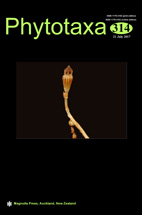Abstract
After consulting related original literature, examining relevant type specimens and conducting field work, it is convinced that Chamaesium spatuliferum could not be conspecific with C. novemjugum and these two species can be readily distinguishable by margin of leaf segment and pericarp length and the shape of calyx teeth. The independent specific status of Chamaesium spatuliferum is strongly supported by the evidence from morphology and micromorphology as well as geographical distribution.

